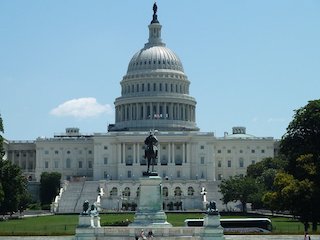Why did the National Telecommunications and Information Administration (NTIA) prioritize fiber in its Notice of Funding Opportunity (NOFO) for the Broadband Equity, Access and Deployment (BEAD) Program last month? Several Senators, including John Thune (R-SD), asked NTIA Administrator Alan Davidson that question point-blank during a subcommittee hearing yesterday.
Multiple industry associations, including NATE, WIA, CCA and WISPA, have stressed the need for a technology neutral position as the government allocates broadband deployment dollars, Inside Towers reported. NTIA is responsible for determining how much of $45 billion it allocates to states. The bulk of that will go towards BEAD, and the rest will be split among a middle mile infrastructure program and state digital equity programs.
Shelley Moore Capito (R-WV), chimed in that the NOFO “put a heavy foot on the pedal for fiber, which is great for West Virginia,” but then asked how NTIA views wireless technologies. Davidson told lawmakers NTIA expects “different states to use different technologies” and the NOFO allows for that. But then he went further, saying, “We think fiber is the gold standard,” because “it’s the most resilient” technology.
But Davidson acknowledged “for some states fiber won’t be the answer. We do give flexibility for those” other technologies like wireless and satellite-delivered broadband, he testified.
Is NTIA Waiting for Good Maps?
Senators stressed the importance of NTIA waiting for the FCC to update its broadband location maps before making decisions on how much of the money to dole out to each state for broadband deployment. “We need to get it right this time,” said Commerce Committee Ranking Member Roger Wicker (R-MS). He noted that past NTIA efforts to disperse broadband deployment dollars “wasted taxpayer dollars while not reaching the goal of bringing broadband to unserved communities.”
The Commission intends to release the first drafts of updated maps this fall, according to FCC Chairwoman Jessica Rosenworcel. Davidson says those are called first drafts because states and localities will have an opportunity to challenge the accuracy of the maps. He assured lawmakers that NTIA will wait for that challenge process to play out before dispensing funds to states.
With a smile, Communications, Media, and Broadband Subcommittee Chair Ben Ray Luján (D-NM) said: “I think you’ll hear from us bipartisanly on this” issue.
Union Preference
Thune and Marsha Blackburn (R-TN) said BEAD “disadvantages” providers that do not use a union workforce to deploy broadband. They pointed out that they both hail from right to work states that don’t have unions. “This should not create unnecessary burdens” for providers to get the job done, Thune said.
Davidson said BEAD “will create tens of thousands of jobs. We want it to be safe. That’s what’s behind these reporting requirements. We have an obligation to make sure all federal laws are obeyed, including federal labor and employment laws.”
While NTIA understands states have different approaches to workforce laws, “We do feel this is not an undue burden. We don’t think it precludes providers in your [states] from participating in the program.”
“Buy American”
Tammy Baldwin (D-WI) asked about the “Buy American” guidance in the NOFO that was specified in the Infrastructure Law, noting she’s heard from providers about supply chain shortages driving up costs.
Davidson said NTIA would abide by the law, however he acknowledged some waivers may be needed. But he cautioned, “the bar needs to be high and waivers carefully tailored” to specific situations.
By Leslie Stimson, Inside Towers Washington Bureau Chief





Reader Interactions